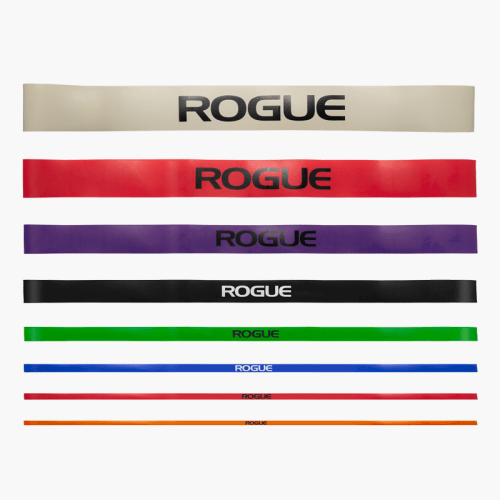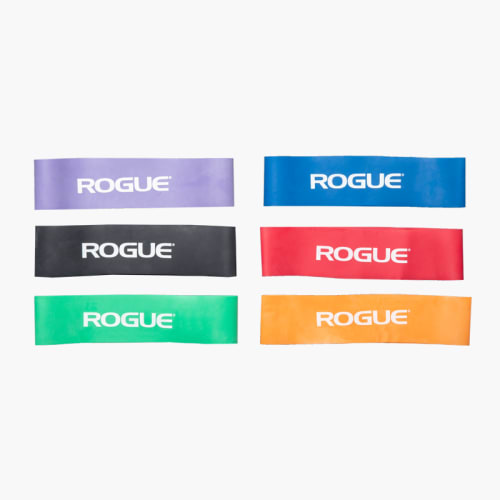5 Effective Resistance Bands Exercises For Glute Muscle Growth
Resistance bands are an very effective way to target the muscles of the glutes, especially for more beginner trainees. In this article I provide 5 exercises you can use to target the muscles of the glutes. I will also discuss the positives and negatives of using resistance bands to train the glutes and some key technical points about glute training.
Get weekly roundups of the best training tools in your inbox, every Monday.
No spam – just thoughtful training advice
- Resistance Bands of Differing Band Tensions
- Benefits of Training the Glutes With Resistance Bands
- Minimal Equipment Set Up
- Affordability
- Negatives Aspects Of Using Resistance Bands for Glute Training
- Overload
- Progressive Overload
- Ket Technical Points for Training The Glutes
- Posterior Pelvic Tilt
- Pausing At The Top of The Repetitions
- Training Age and Exercise Selection
- Repetition Range For Hypertrophy
- Sample Glute Warm Up
- 5 Effective Resistance Bands Exercises For Glute Muscle Growth
Resistance Bands of Differing Band Tensions
Benefits of Training the Glutes With Resistance Bands
Minimal Equipment Set Up
Resistance bands allow individuals to create minimal training set ups that are perfect for those looking to do their resistance training at home or while they travel. This ability to have your equipment with you while you travel can allow you to be very consistent with your resistance training.
Affordability
Resistance bands are one of the cheapest pieces of strength training equipment available. This means that anyone on a tight budget can use them for their home training, making them much more accessible than barbells and other forms of free weights.
Negatives Aspects Of Using Resistance Bands for Glute Training
Overload
Overload is when the body is stressed in such a way that it creates adaptation. Which is essentially the goal of resistance training. When we do not provide a stimulus that is creating adaptation, we are not training effectively. This is often the case when intermediate and advanced individual use resistance bands to train effectively. They simply do not provide enough stimulus to create an adaptation. For beginners this is often not the case, almost any sort of stimulus can create an adaptation, which is why training with resistance bands is much more effective for beginners.
Progressive Overload
Progressive overload is where we take the principle of overload and make that overload more challenging over time. This creates a situation for continuous growth and adaptation. Creating effective progressive overload with resistance bands can be challenging, especially if you are just working with one resistance band. Having resistance bands of differing band tensions can help solve this problem as it will allow you to move from one band tension to the next, thereby using progressive overload effectively.
Ket Technical Points for Training The Glutes
Posterior Pelvic Tilt
The posterior pelvic tilt is crucial to being able to activity work the muscles in the glute. In order to understand what a posterior pelvic tilt is, lye with your back on the floor and actively press the lower back into the floor. When in this position, squeeze your glutes as hard as possible and you should be able to create a full contraction. Now perform an anterior pelvic tilt, lifting the belly bottom to the ceiling and taking the lower back off the floor. From here if you attempt to squeeze the glutes, you will notice that the contraction is much lesser. This not only helps you learn the required position but also why the posterior pelvic tilt is so important to glute activation and training.
Pausing At The Top of The Repetitions
When training the muscles of the glutes, it is really important that you perform a pause at the top of each repetition and squeeze the muscle of the glutes as much as possible. This will enable you to create the required fatigue in the muscle to cause growth. Exercises that target the glute can easily be performed by other muscle groups like the hamstrings, so it is very important that we put emphasis on specifically targeting this muscle.
Training Age and Exercise Selection
The exercises you select to grow and strengthen the muscles of the glutes will be highly based on your training age and current strength level. For some individuals a quadrupled extension (donkey kick) will be a difficult enough exercise to create a stimulus, whereas for more advanced individuals it will be a warm up exercise that will create no adaptation whatsoever. This should be taken into consideration when picking exercises to use from this exercise list.
Repetition Range For Hypertrophy
In order to induce hypertrophy (muscle gain) in a muscle you need to generate a high amount of fatigue in individual sets and a large amount of volume during the week. Training the glutes effectively will involve performing between 8-15 tough working sets during a week of training. This will mean performing 2-3 sessions a week where the glutes are targeted. When I say tough working sets, this will mean sets where you are approaching failure and creating high amounts of fatigue in the muscle.
Sample Glute Warm Up
Complete 3 rounds
1. Hip Thrust
2. Groin Shift Hinge
3. Plank
5 Effective Resistance Bands Exercises For Glute Muscle Growth
Buy Bands ↗
Buy Loop Bands ↗
Buy Bands ↗
Buy Loop Bands ↗
Buy Loop Bands ↗
If you enjoyed this resource you can find more below or try Programme, a fitness app that plans every workout for you – based on your progress, equipment and lifestyle.
This resource was written by Sean Klein. Sean Richard Klein has thousands of hours of coaching experience and a BSc in Sports Science with Management from Loughborough University. He owns a gym in Bayonne France, CrossFit Essor, which runs group classes and a Personal training studio.
Sean Klein



